Introduction
Recognizing the early signs of Autism Spectrum Disorder (ASD) is crucial for effective intervention and improved life trajectories for affected children. ASD impacts social interaction, communication, and learning, and early diagnosis is key during the peak plasticity of the brain in early childhood. However, current screening practices have shown discrepancies, leading to the urgent need for more accurate and accessible screening tools.
Technological advancements, such as eye-tracking technology, hold promise in revolutionizing the diagnosis of ASD. Early intervention, particularly with behavioral therapy, has been shown to greatly enhance the quality of life for individuals with autism. Understanding the critical components of Applied Behavior Analysis (ABA) therapy and creating a structured environment are vital for optimal outcomes.
Tailored communication techniques and collaborative strategies, along with coping strategies and individualized learning plans, support individuals with ASD in their social development and overall well-being. Looking to the future, innovative therapies and community support programs offer hope for transformative change in the treatment of ASD.
Importance of Early Diagnosis and Intervention
Recognizing the early signs of Autism Spectrum Disorder (ASD) is pivotal in charting a path toward effective intervention and improved life trajectories for affected children. ASD, a developmental disability impacting social interaction, communication, and learning, presents a spectrum of symptoms that vary in severity. Around 1 in 160 children globally are diagnosed with ASD, with the incidence being higher in the United States at 1 in 68 children.
Identifying ASD in its infancy stages is crucial, as the window of opportunity for impactful intervention is during early childhood when the brain's plasticity is at its peak.
Current screening practices, like the Modified Checklist for Autism in Toddlers-Revised with Follow-Up (M-CHAT-R/F) conducted during well-child visits, have shown to be more accurate in research settings than in primary care. This discrepancy is especially notable in girls and children of color. The M-CHAT-R/F's sensitivity in primary care is low, leading to the urgent need for more accurate and universally accessible screening tools.
Such tools could significantly reduce the delays in diagnosis and intervention, thus improving outcomes for children with ASD.
Technological advancements are beginning to address these challenges by improving diagnostic accuracy and efficiency. For example, eye-tracking technology is showing promise as an objective method to detect early signs of autism. This innovation, along with other biomarker discoveries, has the potential to revolutionize the diagnosis of ASD, making it possible to identify the disorder earlier and with greater precision.
Research indicates that only 10-20 percent of children diagnosed with ASD before the age of 5 are able to live independently as adults. This highlights the significance of early intervention, which can substantially enhance the quality of life for individuals with autism. Interventions like behavioral therapy have been shown to have better outcomes when started early, with randomized-controlled trials taking precedence in determining the most effective approaches for treatment.
The complex interplay of genetic and environmental factors in the development of autism underscores the need for a nuanced approach to diagnosis and intervention—a notion echoed by researchers and clinicians alike. As we learn more about the transition from the risk of ASD to the manifestation of its symptoms, it becomes increasingly clear that early diagnosis is the gateway to optimal outcomes for children on the spectrum.
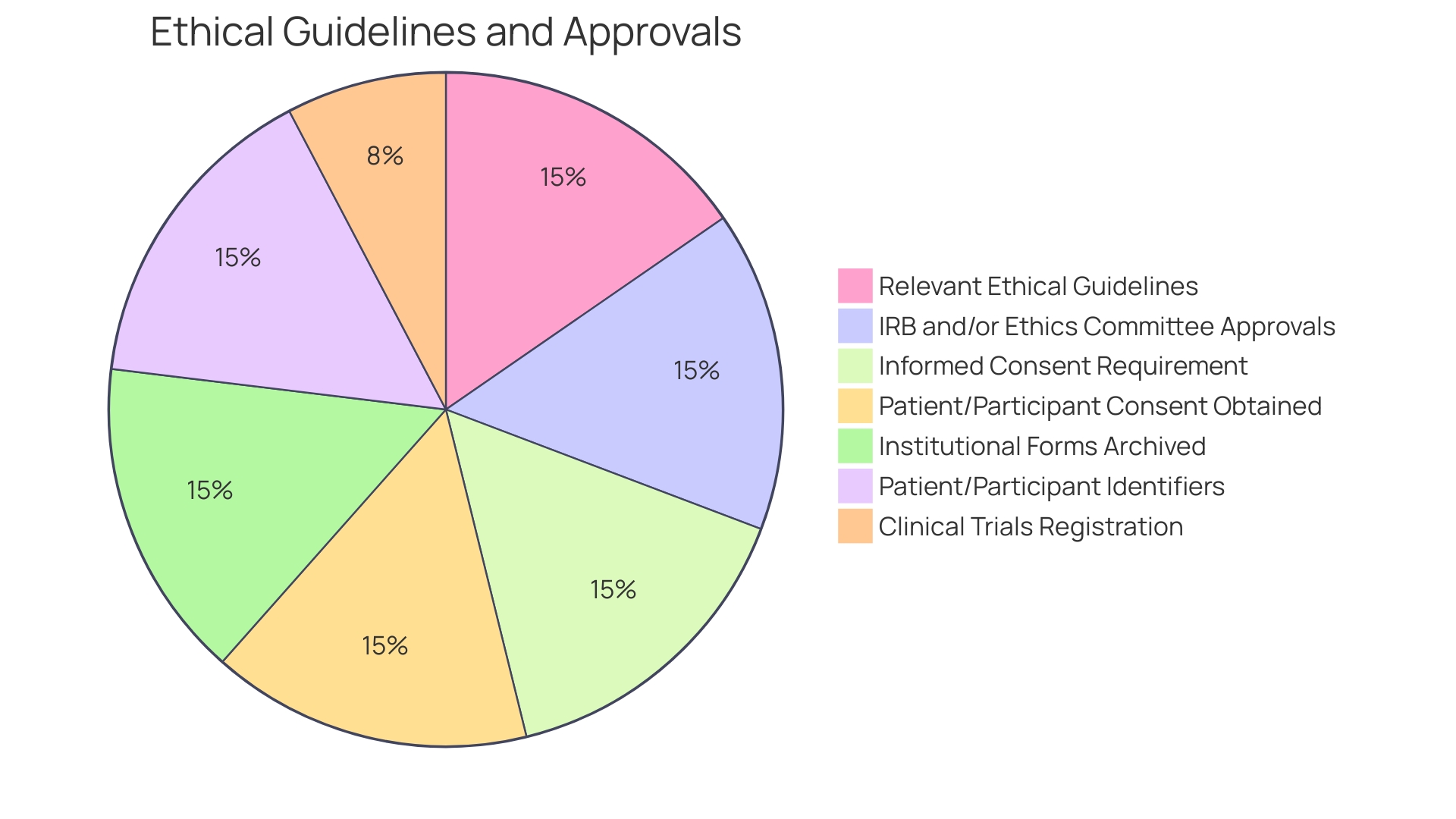
Understanding Applied Behavior Analysis (ABA) Therapy
Applied Behavior Analysis, commonly known as ABA, is a treatment grounded in evidence and widely endorsed for individuals with Autism Spectrum Disorder (ASD). At the core of ABA lies the fundamental objective of enhancing social, communicative, and adaptive skills through behavior modification. This involves a meticulous process of identifying specific behaviors and employing targeted interventions to foster positive change.
The recent release of new guidelines for ABA by the Council of Autism Service Providers underscores the critical nature of high-quality implementation to ensure the effectiveness of this treatment. With over a decade of clinical knowledge, Board-Certified Behavior Analysts are at the forefront of this initiative, leveraging technology to streamline care coordination and optimize treatment outcomes. These professionals apply their expertise across various treatment settings, demonstrating ABA's adaptability to meet the diverse needs of individuals with ASD.
Their commitment to best practices and high-quality care sets the stage for ABA's success in improving the lives of those on the autism spectrum.
Key Components of Effective ABA Therapy
Optimizing ABA therapy involves a deep dive into its critical components to ensure its success. A New York state-licensed and Board-Certified Behavior Analyst, with substantial clinical knowledge, emphasizes the importance of creating technology solutions that aid in delivering high-quality, coordinated care. In ABA therapy, this translates to a structured approach including behavior assessment, meticulous data collection, strategic behavior intervention planning, and ongoing evaluation.
Understanding these elements is not just about enhancing therapy; it's about empowering parents to be proactive in their child's developmental journey. With the latest research advocating for evidence-based treatments and the move towards randomized controlled trials, it is clear that a robust, data-driven approach to ABA therapy is more important than ever. Whether it's through direct care or streamlining treatment processes, the goal is consistent: to improve outcomes for individuals with autism and ADHD by tailoring interventions to their unique needs.
By engaging with these foundational aspects, parents can bridge the therapy experience from clinical settings to their homes, fostering continuous progress.
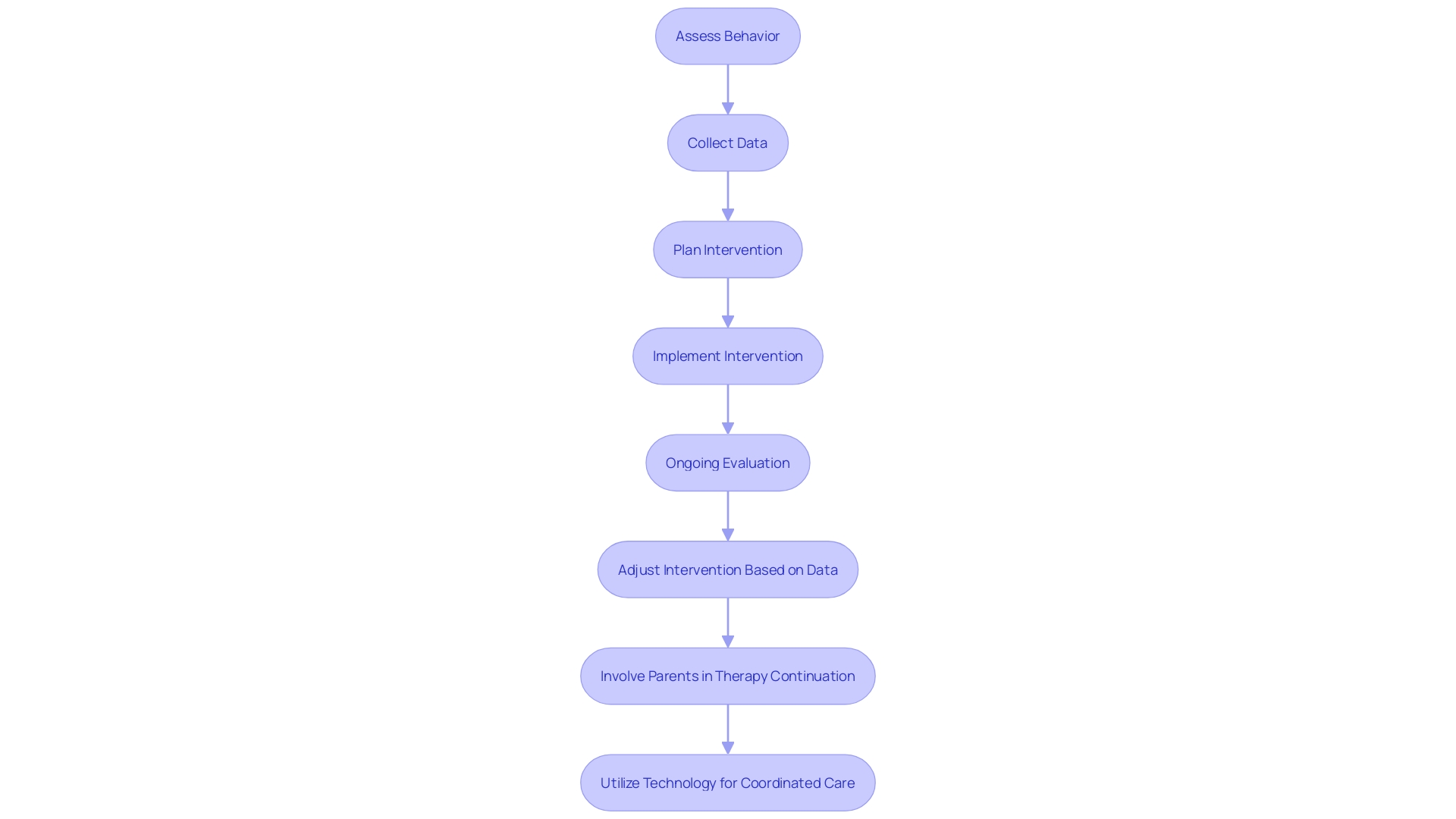
Cognitive Behavioral Therapy (CBT) for Children with Autism
Applied Behavior Analysis (ABA) therapy, a well-established approach for enhancing positive behaviors and diminishing unwanted ones, has been a beacon of hope for individuals with autism, including those who experience concurrent emotional and behavioral challenges. This powerful therapy is grounded in the science of learning and behavior, offering customized interventions to improve social, communication, and learning skills. ABA therapy stands out for its adaptability, allowing it to be tailored to the unique needs of each child, which is particularly beneficial for those on the autism spectrum.
As clinicians strive to provide the most effective support, the landscape of autism care research is constantly evolving. This evolution has witnessed a shift from quasi-experimental studies to more rigorous randomized controlled trials, ensuring that the interventions used are backed by the strongest evidence available. The ultimate goal is to offer autistic children the chance to engage meaningfully in all aspects of life, including school, home, and leisure activities, thus fostering their mental health and promoting equity within society.
As Dr. David (Dan) R. Offord, a renowned child psychiatrist, aptly put, "I do not mind if my children are in a race as long as the race is fair."
Recent findings from the National Institutes of Health underscore the significance of ABA therapy's impact on cognitive function. Children with anxiety disorders exhibited overactivity in multiple brain regions, a condition that showed remarkable improvement following ABA therapy. This underscores the therapy's effectiveness not just in behavioral outcomes but also in altering brain function, which can be pivotal for autistic children facing co-occurring emotional and behavioral problems.
Moreover, the importance of identifying and addressing problematic behaviors is highlighted by evidence-based procedures such as the Interview Informed Synthesized Functional Analysis (IISCA). Developed to discern the function behind certain behaviors, IISCA is a testament to the ever-advancing field of behavior analysis, ensuring that interventions remain precise and individualized.
In the midst of these advancements, technology plays a crucial role in enhancing ABA therapy's reach and effectiveness. As highlighted by one New York state-licensed and Board-Certified Behavior Analyst, the creation and enhancement of technology solutions for providers and health plans are instrumental in delivering best practice and high-quality care. These innovations streamline the review processes and ensure that coordinated care meets the highest standards, benefiting both the individuals receiving therapy and their supportive caregivers.
In conclusion, embracing ABA therapy's principles and leveraging cutting-edge research and technological advancements, caregivers and professionals can provide autistic children with the tools they need to thrive and lead fulfilling lives, leveling the playing field in the 'race' of life.
Creating a Structured Environment
For individuals with Autism Spectrum Disorder (ASD), a structured environment is akin to a steady compass in an ever-changing world. It provides the framework for predictability and security, which is crucial for their well-being. Establishing a structured environment involves integrating routines, visual schedules, and sensory-friendly spaces across settings such as home and school.
Visual schedules can serve as a roadmap for the day, offering a visual representation of activities that can help reduce anxiety about the unexpected. Routines establish consistency, making the world more predictable and manageable for individuals with ASD.
Sensory-friendly spaces address the unique sensory needs by creating an environment that minimizes overwhelming stimuli. For instance, modifications in lighting, color, and acoustics can make a significant difference in comfort levels. This approach is underscored by the Autism ASPECTSS Design Index, which emphasizes the importance of acoustics and spatial sequencing in creating supportive environments.
The index reflects a growing understanding of neuroarchitecture—the impact of the built environment on neurocognitive functions.
Case studies, like the story of Lil transitioning from special school to a community-based setting, highlight the importance of preparing ASD individuals for new environments. Similarly, Emirates and Dubai International Airport's initiative to simulate the travel experience for neurodivergent passengers showcases how rehearsal and familiarity can alleviate stress during transitions.
The impact of structured environments is not only supported by anecdotes but also by research. Neurodivergent individuals, including those with ASD, face significant employment challenges. Statistics show that only around 3 in 10 working-age autistic individuals are employed, compared to 8 in 10 non-disabled people.
By improving environmental structures, we can enhance their ability to participate fully in various aspects of life, from education to employment.
In essence, the creation of a structured environment for individuals with ASD is a multidimensional effort. It requires attention to their sensory experiences, cognitive needs, and a deep understanding of how our surroundings shape our mental health and behavior. These efforts pave the way to a more inclusive and supportive society, ultimately contributing to the well-being and empowerment of individuals with ASD.
Positive Reinforcement Techniques
ABA therapy utilizes positive reinforcement as a cornerstone strategy to foster desirable behaviors in individuals with autism and ADHD. By consistently rewarding actions that contribute to learning and growth, this approach reinforces the connection between behavior and positive outcomes. Token economies, praise, and tangible rewards are some of the techniques employed to bolster a child's motivation and engagement.
A token economy, for instance, is a system where tokens are earned for specific behaviors and later exchanged for a meaningful reward. Praise, when genuine and specific, not only boosts self-esteem but also clarifies which behaviors are appreciated. Rewards, whether small treats or enjoyable activities, create an enjoyable learning atmosphere and encourage the repetition of the desired behavior.
Implementing these strategies with consistency and care can significantly influence a child's progress, making the learning environment more inviting and effective.
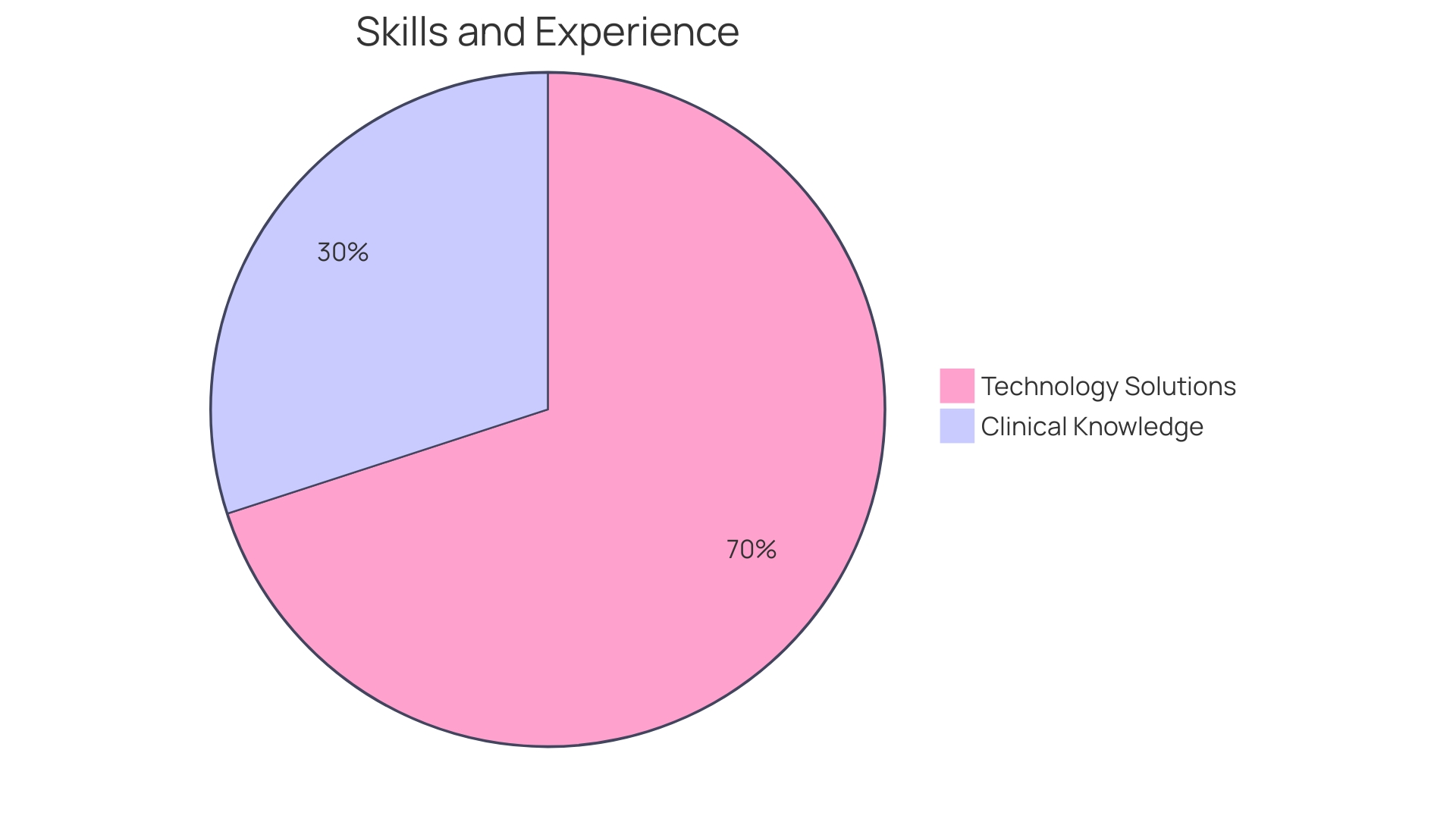
Individualized Learning Plans (ILPs) in Educational Settings
An Individualized Learning Plan (ILP) is a strategic and personalized educational framework designed to address the specific learning requirements and aspirations of children with Autism Spectrum Disorder (ASD). ILPs are crafted through a collaborative process involving a team of dedicated professionals, including teachers, therapists, and educational experts, all working in unison to facilitate the child's academic and social development.
The development of an ILP begins with a thorough understanding of a child's strengths, challenges, and interests, often derived from a multifaceted evaluation process. This assessment serves as the foundation for setting realistic and measurable goals, which are tailored to promote the child's progress across various domains, from academic achievements to social integration and independent living skills.
In line with the principles of transition services, ILPs not only focus on present educational needs but also on preparing students for life beyond the school environment. This forward-thinking approach includes identifying postsecondary goals and designing a pathway that aligns with the student's future aspirations, whether in further education, employment, or independent living.
To underscore the importance of this personalized approach, consider the insights shared by Dr. Aleksandra Hollingshead, a distinguished associate professor of special education, who emphasizes the value of student engagement through the Universal Design for Learning framework. Dr. Hollingshead's research accentuates the significance of academic engagement for students with autism, highlighting the need for instructional strategies that resonate with their unique learning styles.
Moreover, the success of an ILP relies on its adaptability and responsiveness to the evolving needs of the child. Regular reviews and adjustments ensure that the plan remains relevant and effective, allowing for accommodations and modifications that accommodate the child's growth and changing needs.
The ultimate goal of an ILP is to create an educational experience that is not only meaningful and comprehensive but also equitable. As Dr. David (Dan) R. Offord, a renowned child psychiatrist, aptly put it, society's aim should be to 'make the race fair' for all children, including those with disabilities. By doing so, we support the mental health and well-being of these children, recognizing their potential and fostering a sense of belonging within their communities and schools.
In essence, ILPs embody the concerted effort to tailor educational experiences that respect the individuality of each child with ASD, paving the way for them to achieve their fullest potential and participate fully in society.
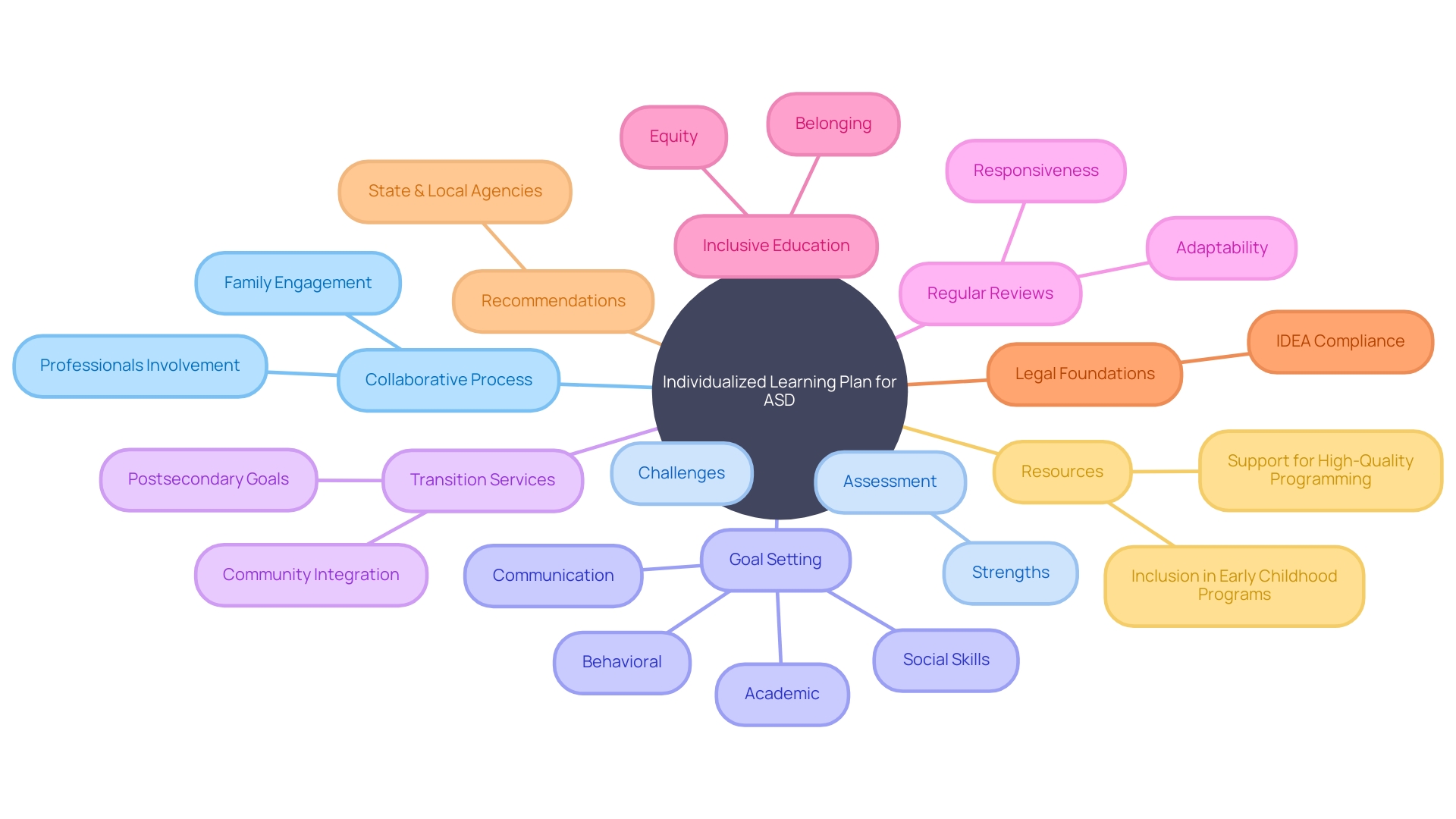
Collaborative Strategies for Success
The synergy of parents, therapists, educators, and additional professionals is pivotal for the successful treatment of children with Autism Spectrum Disorder (ASD). Effective collaboration hinges on transparent communication, a united front in decision-making, and the ability to work as a cohesive team. By participating actively in the treatment process, parents can help shape a treatment approach that is not only comprehensive but also tailored to the specific needs of their child.
Dr. David (Dan) R. Offord, a child psychiatrist, once said, "I do not mind if my children are in a race as long as the race is fair." This sentiment underscores the essential role that equitable and supportive participation plays in the lives of children, especially those with disabilities, in school, home, and leisure activities. Such participation is vital for mental health and serves as a foundation for societal equity.
Recognizing the unique needs and strengths of each child, mitigating stress, and empowering caregivers with adequate resources, all contribute to the well-being of the family unit and the healthy development of children with ASD.
Real-world applications, such as an Augmented Reality (AR) tool designed for dental visits, highlight the importance of adapting environments to meet the sensory needs of children with ASD. By translating tactile sensations into visual and auditory stimuli, this tool exemplifies how understanding and catering to individual sensitivities can lead to more positive experiences.
Furthermore, the Interagency Autism Coordinating Committee (IACC) exemplifies a collective effort to enhance autism research and services. This federal advisory committee is notable for its diverse composition, including government officials, autistic adults, parents, and various stakeholders, all collaborating to represent the community's perspective and expertise in shaping policy and practice.
These collaborative efforts are mirrored in research, with studies revealing the necessity for evidence-based practices that respect the perspectives of the autism community. Concerns such as the integrity of intervention research, potential biases, social validation, and the avoidance of conflicts of interest are paramount to ensure that interventions are not only effective but also respectful and ethical.
The collaborative model, as seen across various domains, is essential for enabling children with ASD to participate fully in their communities, enhancing their quality of life, and fostering an environment where every race is, indeed, fair.
Flexible Strategy Modifications and Developmental Shifts
Applied Behavior Analysis (ABA) therapy is a dynamic process tailored to meet the evolving needs of individuals with Autism Spectrum Disorder (ASD). As children grow and reach new milestones, it's crucial for ABA strategies to mirror their development. To support consistent progress, it's necessary to conduct regular assessments and fine-tune therapy objectives and methods accordingly.
Research underscores the importance of interventions that adapt to the changing profiles of children with ASD, with studies indicating that rigid, static approaches can hinder the effectiveness of therapy. Instead, embracing a model that is responsive to a child's current abilities and challenges is key. This includes leveraging technology solutions designed to facilitate best practices and high-quality care, ensuring that therapy adjustments are informed, timely, and beneficial.
Taking inspiration from Dr. Dan R. Offord's philosophy of providing equitable opportunities for all children, including those with disabilities, it becomes clear that ABA therapy should not only address unmet needs but also recognize the unique contributions that these children bring to their communities. By reducing stressors and providing caregivers with the necessary resources, we can foster environments where children with ASD can thrive.
The commitment to refining ABA therapy is backed by a decade of clinical expertise from Board-Certified Behavior Analysts, who advocate for high-quality, coordinated care that evolves with each child. This approach aligns with the overarching goal of creating a fair 'race' for all children, ensuring that those with ASD have the support they need to succeed in their developmental journey.
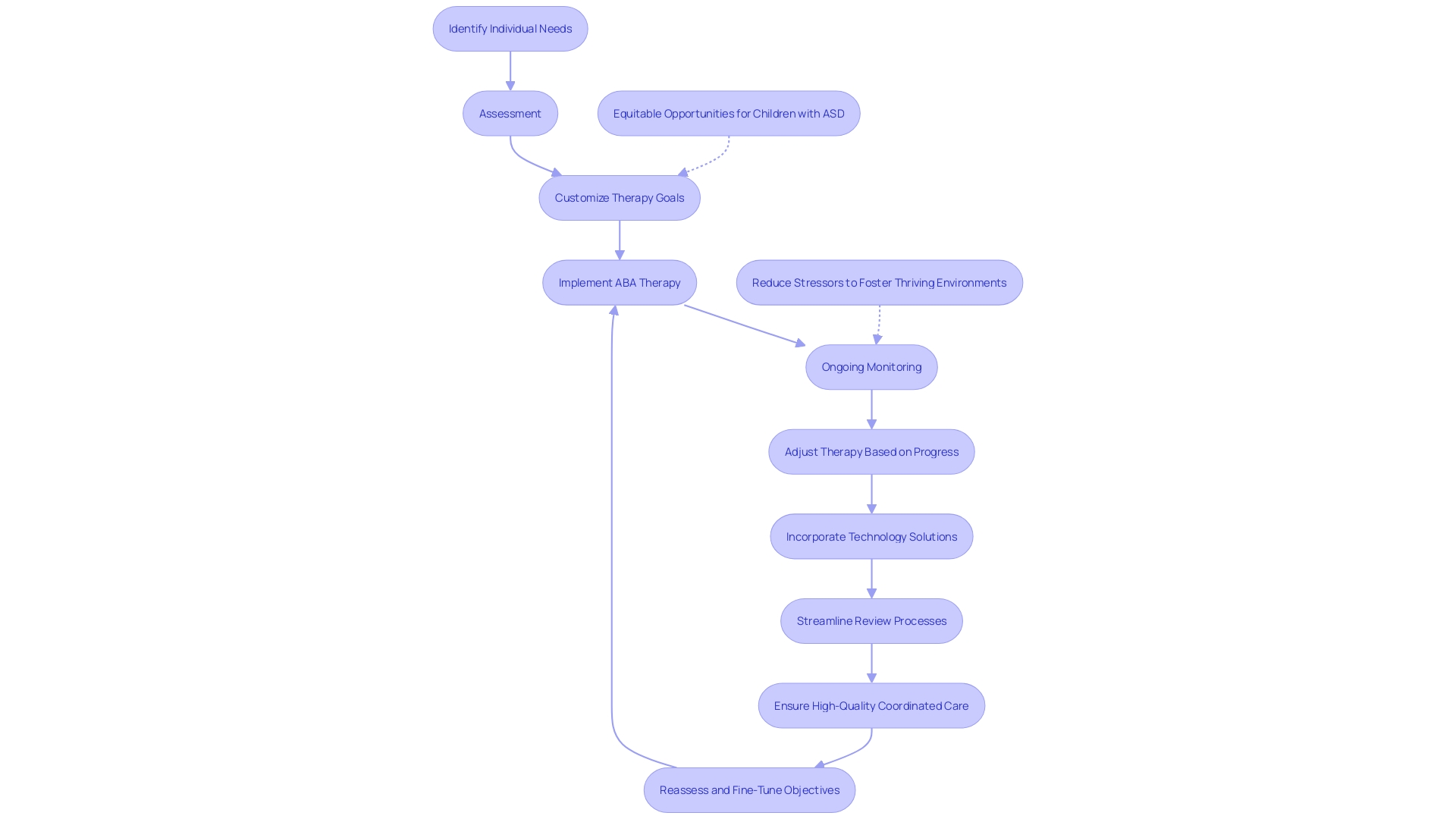
Tailored Communication Techniques
Bridging the gap in communication for individuals with Autism Spectrum Disorder (ASD) is a multifaceted endeavor, requiring not only a deep understanding of each person's unique strengths and challenges but also a commitment to fostering an environment where their voices are heard and valued. Tailored communication techniques play a crucial role, with visual supports, social stories, and augmentative and alternative communication (AAC) systems being instrumental in empowering those with ASD to articulate their needs, preferences, and emotions.
Visual aids, such as the Picture Exchange Communication System (PECS), can be particularly effective for individuals with limited verbal language. By using photos, gestures, or other visual cues, they can communicate more effectively. For others, technology offers a valuable platform—typing can sometimes be a preferable mode of communication over verbal exchanges.
Social stories are another powerful tool. They help individuals with ASD to understand and navigate social interactions, which can often be complex and overwhelming. These personalized stories illustrate social cues and appropriate responses, providing a practical framework for understanding social norms.
Additionally, structured questions can prompt conversations and foster connections, serving as a bridge between autistic and neurotypical individuals. This method acknowledges the unique ways in which individuals with ASD process information—from reading nonverbal cues to interpreting messages—and tailors interactions accordingly.
The effectiveness of these communication strategies is supported by research emphasizing the importance of early intervention. Studies highlight the link between preverbal social communication, such as joint attention, and later language competency. By targeting these early forms of communication, we can set the stage for more complex verbal interactions in the future.
Moreover, educational approaches like the TEACCH program underscore the value of consistency and visual learning. Adjusting classroom structures to include clear visual routines and boundaries can significantly improve academic and social outcomes for students with ASD.
In conclusion, by recognizing the strengths of each individual with ASD and implementing supportive communication strategies, parents and educators can profoundly impact their ability to connect with the world around them.
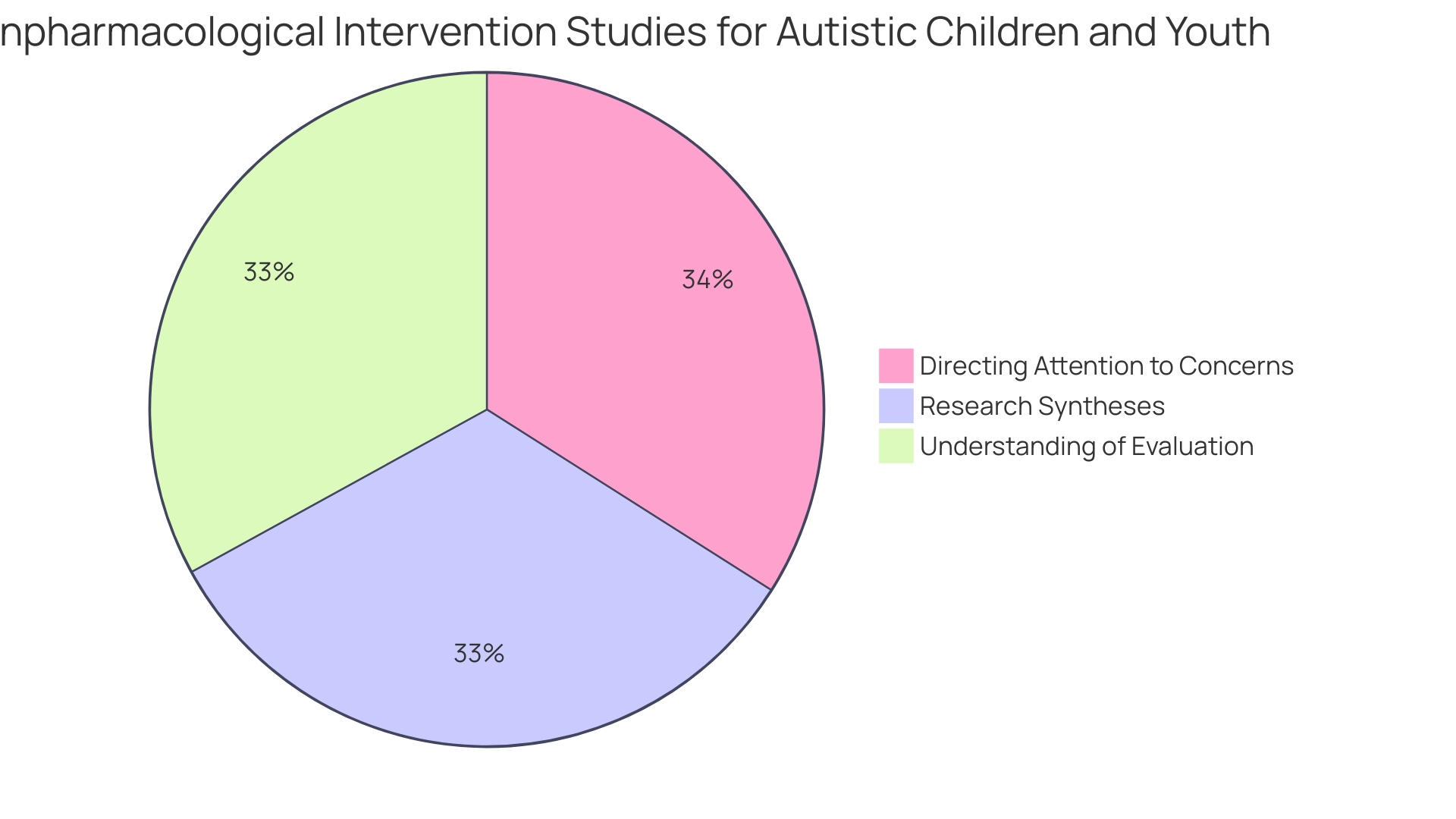
Supporting Social Interaction and Relationships
Navigating the complexities of social interactions is a crucial aspect of development for individuals with Autism Spectrum Disorder (ASD). It's essential to foster social skills that enable meaningful connections, helping these individuals to form friendships and feel integrated within their communities. By recognizing their unique strengths and talents, we can cultivate a supportive environment that promotes their social growth.
Dr. David (Dan) R. Offord, a child psychiatrist, highlighted the importance of equitable and supportive participation in all facets of life for children with disabilities, which is intrinsically linked to mental health and overall well-being.
Autistic adolescents often face challenges in social communication, which can impact peer relationships and potentially lead to feelings of depression. It's been observed that mood disorders in autism can present in various ways, including social withdrawal or behavioral issues. Therefore, providing strategies that cater to the individual needs of autistic children is paramount.
The Interagency Autism Coordinating Committee (IACC) and other organizations work tirelessly to improve autism research and services, ensuring that the voices of individuals on the autism spectrum are heard. Their efforts underscore the importance of community support in enhancing the lives of those with ASD.
Moreover, recent reports indicate a significant increase in autism diagnoses, with current estimates at 1 in 36 children. This rise calls for heightened awareness and tailored approaches to education and social skills development. For the subset of autistic students with academic gifts, known as 'twice exceptional,' research has identified strategies that aid in their successful transition into college, underlining the value of personalized support.
The strengths-based approach, advocated by social worker Bertha Reynolds and others, suggests that focusing on the unique abilities and interests of individuals with autism can lead to optimized learning and professional development. Individualized learning plans that align with their specialized interests can significantly enhance their educational experience.
In conclusion, supporting the social development of individuals with ASD involves a multifaceted approach, recognizing their strengths, reducing stressors, and ensuring that resources are available for parents and caregivers. By adopting a strengths-based and individualized approach, we empower these individuals to thrive in social settings, forge lasting relationships, and contribute meaningfully to their communities.
Coping Strategies for Autism
Understanding and implementing coping strategies are essential for individuals with Autism Spectrum Disorder (ASD) to navigate stress, anxiety, and sensory sensitivities. Coping strategies encompass a range of techniques, each tailored to address the unique challenges faced by individuals with ASD. Self-regulation techniques, for instance, empower individuals to understand and manage their emotions and reactions proactively.
Sensory interventions are designed to mitigate sensory overload by modifying the environment or using sensory tools. Meanwhile, relaxation exercises aim to reduce anxiety and induce calmness through methods such as deep breathing or mindfulness.
Self-regulation is a skill that, once honed, can profoundly impact all areas of life, leading to improved health and relationships. Autism brings its own set of challenges upon reaching adulthood, and for those diagnosed later in life, understanding their specific needs is critical. While therapeutic needs for common conditions like anxiety may be similar to the general population, autistic adults often face the additional task of establishing trust with practitioners, emphasizing the need for tailored coping strategies.
Educational treatments, like the TEACCH approach, recognize that individuals with autism benefit from consistency and visual learning. By adjusting the classroom structure, parents and educators can foster an environment conducive to learning and positive behavior. This approach, along with the inclusion of autistic individuals in career growth opportunities, reflects the broader goal of supporting neurodivergent individuals not just in early life but throughout their careers and lives.
Moreover, statistics highlight the importance of engaged and supported participation in life's domains as a determinant of mental health and equity. This participation is especially vital for autistic children and youth who may experience co-occurring emotional and behavior problems, indicating the need for coping strategies that foster inclusion and reduce stress.
Future Directions in ASD Treatment
Exploration and innovation are the cornerstones of progress in the treatment of Autism Spectrum Disorder (ASD). Emerging therapies, cutting-edge technologies, and robust community support programs are paving the way for remarkable advancements. By delving into the science of re-balancing the immune system and harnessing the power of pharmacological interventions, researchers are on the cusp of unlocking new pathways to functional cures.
These breakthroughs are poised to redefine our approach to ASD treatment.
In the quest for these breakthroughs, the role of federal advisory committees, such as the Interagency Autism Coordinating Committee (IACC), is crucial. The IACC's mandate to enhance research and services coordination, as well as its collaboration with a diverse array of stakeholders, reflects a comprehensive effort to push the boundaries of what's possible in ASD care.
Moreover, the FDA's commitment to ensuring the safety and efficacy of new therapies is instrumental in bringing innovative treatments to the forefront. With each approved new molecular entity or therapeutic biological product, the landscape of ASD treatment is enriched, offering fresh hope and options to individuals on the autism spectrum and their families.
In tandem, initiatives like AT-Newswire and organizations such as The Autism Community in Action (TACA) underscore the importance of early and accurate diagnosis. Their efforts to disseminate vital information and support reflect an unwavering dedication to the autism community.
As we look to the future, the convergence of scientific insights, regulatory frameworks, and community involvement suggests a promising horizon for ASD treatments—one where the potential for transformative change has never been more tangible.
Conclusion
In conclusion, recognizing the early signs of Autism Spectrum Disorder (ASD) is crucial for effective intervention and improved life trajectories for affected children. Current screening practices have shown discrepancies, leading to the urgent need for more accurate and accessible screening tools. Technological advancements, such as eye-tracking technology, hold promise in revolutionizing the diagnosis of ASD.
Early intervention, particularly with behavioral therapy, greatly enhances the quality of life for individuals with autism. Understanding the critical components of Applied Behavior Analysis (ABA) therapy and creating a structured environment are vital for optimal outcomes. Tailored communication techniques and collaborative strategies, along with coping strategies and individualized learning plans, support individuals with ASD in their social development and overall well-being.
Looking to the future, innovative therapies and community support programs offer hope for transformative change in the treatment of ASD. By embracing these strategies and resources, Parent Advocates can navigate challenges and ensure the well-being of their children with confidence and support.




